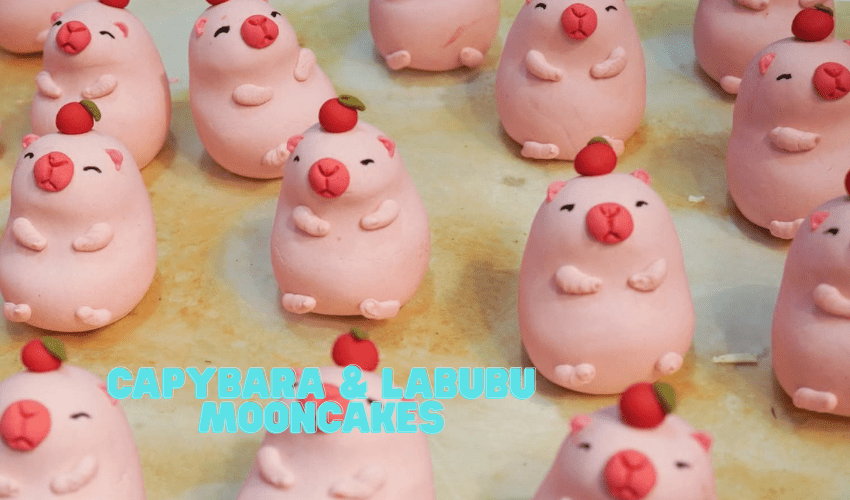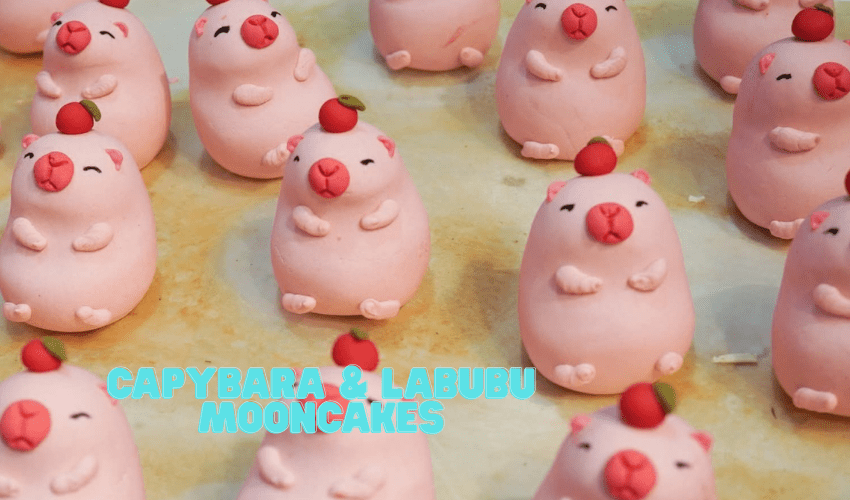Capybara and Labubu Mooncakes: The Mid-Autumn Craze in Vietnam
The Mid-Autumn Festival in Vietnam has taken on a new flavor this year. A fresh craze has emerged as Capybara and Labubu-themed mooncakes become one of the most talked-about trends, drawing in both children and adults. More than just food, these mooncakes are now viewed as unique gifts and cultural collectibles, even though their price is far higher than traditional mooncakes.

The Rise of Uniquely Shaped Mooncakes
This new wave originates from the social media trend of collecting Capybara and Labubu merchandise. Small artisan bakeries quickly adapted, and even long-standing brands joined the movement. In Ho Chi Minh City, a workshop owner revealed that Capybara mooncakes are completely handmade, not pressed with molds, making the process more labor-intensive. This extra effort explains why buyers are willing to pay premium prices for these one-of-a-kind creations.

What Makes These Mooncakes Stand Out
Innovative Ingredients and Presentation
Beyond their playful shapes, these mooncakes showcase innovation in baking techniques. Some bakeries have introduced a special “thủy mộc” (water-wood) crust made from white beans instead of flour, helping the cakes retain their natural color after baking. Inside, the fillings still feature beloved Vietnamese classics such as lotus seed and mung bean paste.
Premium Pricing and Emotional Value
At 100,000 to 135,000 VND =~($4-$6) for a 120-gram cake, these mooncakes cost more than double a standard option. Yet demand is surging. Many customers buy them less for eating and more for photographing, gifting, or displaying—proof that emotional value and uniqueness are now leading consumer priorities.
How the Market Is Reacting
Small-scale artisans may have sparked the craze, but major corporations are also moving fast. Brands like KIDO and Orion Vietnam are ramping up production ahead of the Mid-Autumn Festival. They are also experimenting with contemporary fillings, including green bean with young rice and matcha with red bean, to align with shifting tastes.
Challenges in the Mooncake Market
Despite the excitement, risks remain. Homemade products lacking clear labeling, food safety information, or ingredient origin pose health concerns. Authorities advise consumers to purchase from trusted bakeries and established brands to ensure quality and safety.
Conclusion
The success of Capybara and Labubu mooncakes illustrates both the creativity and adaptability of Vietnamese businesses. More than a passing fad, this trend reflects a larger shift in consumer behavior, where emotional connection, innovation, and exclusivity are valued as much as taste. It marks a new chapter for the Mid-Autumn Festival in Vietnam—one where tradition meets modern expression.


